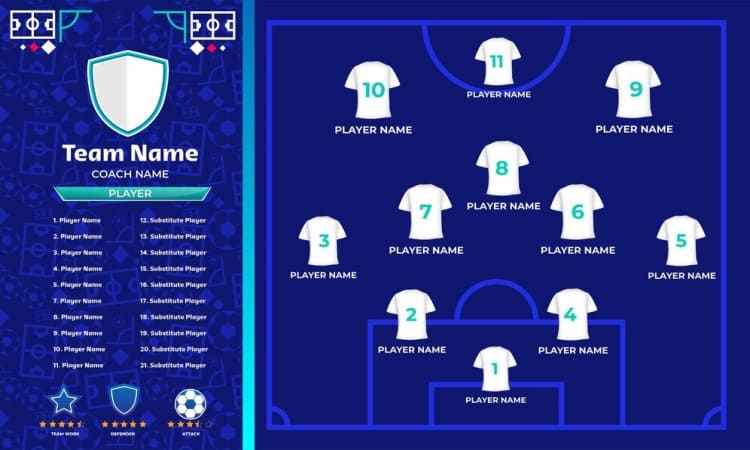If you’ve come across a basketball game on TV and spent time watching it, you must have heard the commentary team ramble on about assists. Hardcore sports fans, regardless of their sport of choice, would be in sync with the commentators, but casual fans or beginners would struggle. What is an assist in basketball, really?
In a sport that most would describe as the art of flight, assists and their entire concept are crucial to understanding the game. In this article, I’ll provide a basketball assist definition, the basics of it all, and why, if at all, it is vital to the game.
Unraveling the Definition: What Is an Assist in Basketball?
As you are well aware, basketball is a game of statistics. The team that garners the most points wins, and the world celebrates the players that score them. But because this is a team sport, assists count as well, and you have to know what this is to understand why it is simple yet very significant. An assist is an immediate successful pass from one player to another, where the latter scores.
In some instances, the assist becomes more beautiful than putting the ball through the hoop, especially if it tears through the defenses or, as seasoned commentators would say, defies physics. The spirit of assists is to highlight teamwork within the team.
Decoding the Assist: Breaking Down the Key Elements
You must be asking yourself, “Is it that simple?” “Is that all there is to assist?” Hardly, my friend. If you are a casual fan, you must have seen what you felt in your bones was an assist, but the player who made that play received no recognition for it. Rings a bell, no? Well, this is because the rules of the game dictate that for a pass to earn the “assist” title, it must directly influence the scoring play. If the receiving player dribbles or takes additional moves before scoring, that is akin to what they would call a “solo goal ” in soccer. And there are more nuances, as you are soon to find out.
What Makes an Assist Tick?
So far, I believe we are now on the same page where basketball assist definition is concerned. In truth, though, assists go far beyond their simple definition. How about a breakdown of how and why assists may come about in an intense court battle?
For starters, intent matters. Do you know how, in soccer, a player intends to cross the ball to a teammate and ends up scoring themselves? In that sport, that goal would stand. In basketball, and particularly regarding assists, it cannot be by luck. The player making the play has to clearly intend to set up their teammate to score. As such, it is not just about “take the ball, pass the ball.” The concept of setting up a clear scoring opportunity for some more points on the board has to come into play.
Again, there has to be a direct connection between the pass and the scoring play. If the recipient finds themselves having to dribble extensively or make some magic moves before scoring, chances are that the pass would not register as an assist. Assist statistics are all about rewarding players who facilitate scoring opportunities.
Remember what we said about team sports? If you think about it, assists call your attention to teamwork and selflessness among players. If I do not have a clear scoring opportunity, why shoot, miss, and hand over the ball to the opposing team? If I can see a better-positioned teammate than I am, the pass is clear in my mind. Why not take it? If they score, it’s more points for us!
I assume this is what goes on in the minds of playmakers who rack up insane assist figures. And the beauty of it? These are usually split-second decisions. In the pulsating atmosphere of a court battle, decision-making is key, but time is not always on your side. Imagine how great of a player these individual athletes are to see those passes in the heat of the moment. They see the bigger picture and execute it in seconds!
The Evolution of Playmaking: How Assists Have Transformed Over Time
The way assists are recorded and interpreted has undergone changes over time. Initially, assists were only awarded if the pass directly led to a field goal without any dribbling. However, the criteria have evolved to accommodate the changing dynamics of the game. Today, assists can be credited for passes leading to free throws or even three-pointers, showcasing a broader understanding of playmaking contributions.
Beyond Numbers: The Significance of Assists in Basketball
As I have repeatedly mentioned, assists are more than just statistics. They reflect the teamwork and beautiful chemistry within a basketball team. Here are some reasons why assists matter in the exhilarating game of basketball:
- Team Cohesion and Ball Movement: Teams with a high number of assists often display exceptional ball movement. The ability, willingness, and skill to share the basketball between players is an unfolding work of art, not a dynamic offensive strategy. The strategy forces opposing players to be 100% on their toes, making them more prone to commit mistakes. Assists, in this regard, contribute to team fluidity and cohesion and are a testament to a team’s style of play.
- Player Recognition – It Goes Beyond Scoring: Of course, scoring the most points is what wins you a game of basketball. But remember what I said about some assists being more beautiful than the play of putting the ball in the hoop? Players with excellent vision rack up assists, a direct testament to their court vision and game IQ. They directly contribute to the team’s success, and thanks to them, these moves are a crucial statistic when evaluating a player. And guess what? They are gems to coaches and fans alike.
- Strategic Advantage: Coaches often integrate assists into their strategic game plans. They rally their teams to be keen on ball movement, unselfish play, and killer passes. This way, they get to exploit their opponents’ defensive weaknesses and, in turn, amp up their scoring opportunities. At the end of the day, assists are a strategic tool for undeniable success in this context.

Analyzing the Playmaking Craft: Going Beyond Basic Definitions
Beyond the basic definition and criteria, basketball enthusiasts often delve into the analytics of assists. A player with excellent vision and one who regularly provides assists earns the “playmaker” title. Enthusiasts dissect these players’ styles of play, stripping them down to statistics of assist-to-turnover ratio and potential assists. These advanced numbers provide a more wholesome understanding of an athlete’s playmaking abilities.
- Assist-To-Turnover Ratio: It sounds mind-boggling, doesn’t it? But the metric is a fairly simple one. The assist-to-turnover ratio evaluates how effectively a player makes successful passes compared to their tendency to commit turnovers. A high assist-to-turnover ratio is a reason to celebrate a player. It highlights their eye and skill for a pass, as well as excellent decision-making to avoid errors that may have grave consequences for the team.
- Potential Assists: Unfortunately, a killer pass may not always end up in the hoop. The receiving player may fail to convert, leaving fans, coaches, and teammates pondering on what might have been. As you would expect, the player who made that play receives zero recognition where their assists tally is concerned, but it’s not their fault that their teammate failed, is it? And that’s where potential assists come in. The potential assists metric calls attention to an athlete’s playmaking impact despite the result not being what they anticipated when making the pass.
Illustrative Scenarios: Examples of Assists in Action
Nothing creates a better picture in your mind than an illustration, no? As such, let me paint that mental picture to better understand assists, although I think we’re already there if you ask me!
- Classic Pick-and-Roll: Think of it like this. Player A dribbles the ball and Player B helps by blocking (picking) the other team. Player A uses this block, tricks the other team’s player, and throws the ball to Player B. Player B then scores! So, we say Player A assisted the score.
- Fast Break Magic: This happens super fast! Player C grabs the ball from the other team and quickly throws it to Player D, who is running super fast down the court. Player D catches the ball and scores a basket without even dribbling! So, Player C gets an assist for the quick pass and score.

Conclusion: Assists as the Heartbeat of Team Collaboration
As we wrap things up, remember the assist basketball definition? I’m sure you know it by heart now, and the one thing we can agree on is that it’s not just a statistic. It reflects synergy within a team. If you’ve been on a court, you know that making the killer pass is much harder than it seems when you’re a spectator. With your revamped knowledge of assists, you’ll now enjoy the game of basketball better, won’t you?







